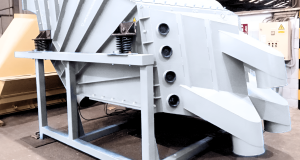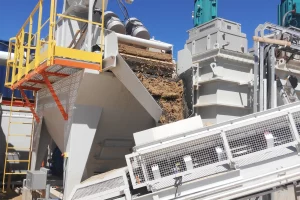Reviving waste – the future of dry density sorting in recycling
Recycling is often seen as a straightforward task: separate, process, and reuse. But the reality, as anyone in the industry knows, is far more complex. It’s a job of accuracy, where the smallest inefficiencies can lead to materials slipping through the cracks, especially when dealing with mixed streams of metals, plastics, and minerals. Mogensen’s GSort Dry Density Separation Tables provide a reliable way to improve sorting efficiency without the need for water-intensive processes.
With environmental regulations tightening and natural resources under strain, the implementation of efficient, water-free processes is becoming a primary consideration in many sectors. Dry density sorting offers an intelligent way for recycling facilities to meet these requirements while maintaining productivity.
Growing awareness of waste recycling
In 2025, waste recycling services market is set to reach approximately $68.0 billion by 2025. This figure reflects a growing understanding that what we throw away isn’t really “away.” It’s a resource waiting for the right hands and the right tools. But those tools need fine-tuning, especially when it comes to managing the estimated 400 million tons of plastic waste expected in 2025. Less than 10% of it will be recycled — a stubborn figure that needs more than good intentions to shift. By improving sorting accuracy without soaking up water resources, advanced technologies like AI and machine learning make recovery smarter, cleaner, and a lot more sustainable
Traditional wet separation processes rely heavily on water, creating wastewater treatment and resource management challenges.
In contrast, GSort tables use vibration, oscillation, and airflow to separate materials by density. This dry approach is gaining traction in industries dealing with complex waste streams such as construction debris, scrap metal, and e-waste.
The strength of dry-density sorting lies in its versatility.
Versatile use of materials
GSort technology can handle a wide range of materials, from lightweight plastics to dense metals, making it easier for facilities to adapt to different recycling needs. The result is a cleaner, more consistent material recovery that uses fewer resources.
As recycling processes become more complex, real-world trials of GSort tables are yielding remarkable results.
Facilities handling difficult waste mixtures, such as demolition waste, report cleaner separation results and more efficient operations. By addressing specific challenges in mixed material recovery, GSort technology demonstrates its adaptability to evolving industry needs. This practical change points to a future where dry sorting doesn’t just reduce water consumption, but actively improves the accuracy and efficiency of material recovery operations.

















